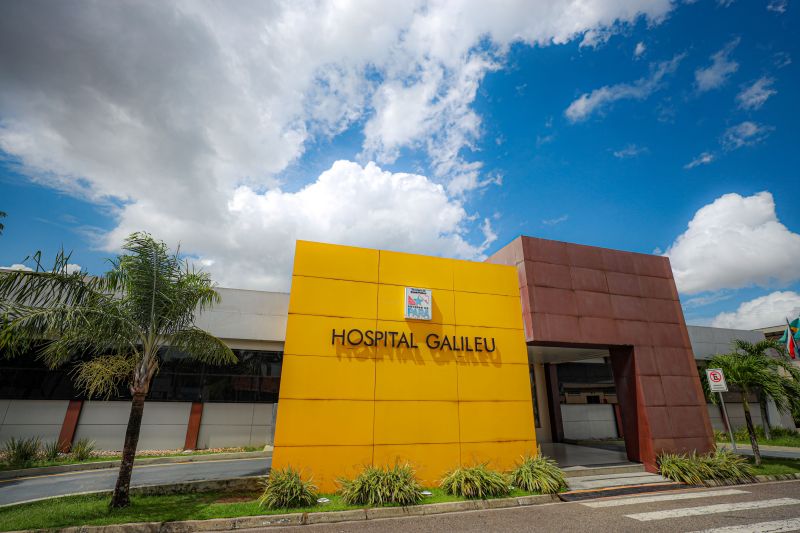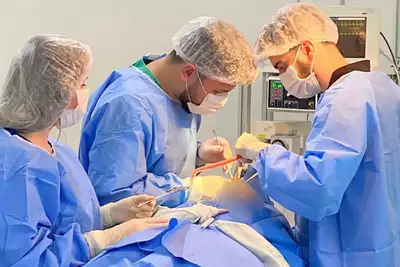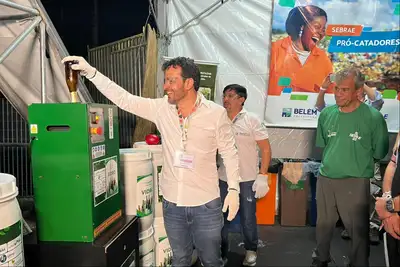Galileu Hospital reaffirms commitment to excellence in patient care
Unit strengthens protocols, technologies, and specialized teams to ensure accurate diagnoses and increasingly safe treatments
At the Galileu State Public Hospital (HPEG), in Greater Belém, the Radiology service is a key player in orthopedic diagnosis. With imaging exams such as X-rays and computed tomography, professionals can identify injuries, assess their extent, and define treatment strategies. Technology acts as a "fingerprint of the trauma," revealing details invisible to the naked eye and pointing the way to recovery.
The unit's radiologist, Alexandre Onuma, emphasizes that imaging exams are allies in the care of patients with orthopedic traumas. "X-ray is usually the first exam requested, as it is quick, accessible, and provides an initial view of fractures and bone changes. In more complex cases, computed tomography is indispensable; it allows for precise visualization of small fissures, lesions, blood vessels, and joints," explains the specialist.
According to the doctor, the distinction between the methods lies in the depth of the images. While X-rays capture two-dimensional projections, ideal for visualizing more evident fractures, computed tomography reconstructs three-dimensional images with a high level of detail. "CT is essential for understanding the real extent of injuries and guiding more assertive actions, especially in complex cases," concludes Onuma.
The specialist adds that each exam has its importance within the diagnostic process, but some injuries can only be fully identified with detailed methods. "Internal injuries, small bone fissures, hemorrhages, pulmonary contusions, complicated dislocations, and damage to soft tissues or blood vessels sometimes go unnoticed in clinical evaluation and require advanced imaging resources, such as CT," highlights the radiologist.
With technological advancements, Onuma emphasizes that radiology is becoming increasingly precise and agile. "Year after year, radiology conferences present more sophisticated equipment, with smart software and high-resolution images that speed up the exam, diagnosis, and increase patient safety. These innovations make orthopedic treatment more efficient, allowing for quick and assertive clinical decisions," he concludes.
Fast flow and accurate diagnosis
At Galileu, the flow of performing imaging exams follows well-defined steps. The patient is admitted either through hospitalization or outpatient consultation, the doctor evaluates and requests the exam, which is performed at the hospital itself. The images are printed and then delivered to the requesting physician, while the report is issued within 48 hours after the exam is performed. For cases conducted in partner clinics, the timeframe depends on the scheduling of each affiliated unit.
With an average of 52 X-rays performed per day, the Radiology service at Galileu consolidates itself as one of the pillars of diagnosis in the unit. In addition to X-ray exams, the team also performs ultrasounds and, through partner clinics, facilitates computed tomography and magnetic resonance imaging, ensuring comprehensive and integrated diagnostic care for patients.
Doctor Alexandre Onuma emphasizes that radiology is essential to the hospital's routine. "By acting in the follow-up and reevaluation of polytraumatized patients who have already gone through the emergency phase, imaging exams are fundamental to detect initially unidentified injuries, monitor clinical evolution, and plan surgical interventions. Radiology ensures high-quality images, speed, and precision, contributing to continuity of care and assisting the multidisciplinary team in appropriate clinical management," explains the specialist.
Finally, he highlights that access to exams follows specific protocols. "The hospital performs the available exams according to the requests of the physicians who make up the clinical staff of the unit, aimed at hospitalized patients and those under outpatient follow-up," clarifies the radiologist.
Profile - The unit is managed by the Social and Environmental Institute of the Amazon (ISSAA), in partnership with the State Department of Public Health (Sespa). The institution is among the best hospitals in Brazil, with satisfaction rates of nearly 100% and ONA level 3 certification, accredited with excellence in safety criteria, integrated management of processes, and excellence in administration.
Service - Galileu Hospital offers services in orthopedics, with surgeries for medium and high complexity fractures. Procedures are performed in the unit for diaphyseal tibia fractures, distal forearm and hand fractures, chronic and acute osteomyelitis. The services are referenced, offered through the state regulation network. Galileu Hospital has 104 inpatient beds and maintains services for bone reconstruction and lengthening, trachea surgeries, and urological surgeries, such as benign prostatic hyperplasia, renal exclusion, and prostate biopsy screening.










